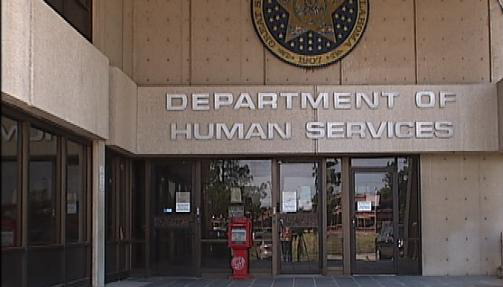The Oklahoma Department of Human Services outlined budget cuts in response to the second revenue failure which amounts to nearly $25 million state dollars that must be reduced before June 30, 2016.
“We have worked very hard throughout the past year to shield the people we serve as much as possible from budget cuts and revenue failures by dramatic reducing administrative costs, personnel, and contracts,” said Ed Lake, DHS Director. “For this second revenue failure, we have strategically targeted reductions to program budgets which will minimize the impact on our most vulnerable clients. If there is another revenue failure before the end of the year, however, the direct impact on our clients will undoubtedly be much more significant.”
To help manage cash flow to the end of the fiscal year, DHS will transition to quarterly payments to persons who receive Aid to the Aged, Blind and Disabled (state supplemental payments). DHS will hold April, May and June payments and make those with the regular July payment. The payments would be made quarterly thereafter. There are 88,190 persons who receive cash payments averaging $36.73 per month. The new quarterly payments will be approximately $110 per person.
The cash benefit program for families with children who have developmental disabilities will be reduced through attrition and by not adding new families through the end of the fiscal year. There are currently 1,690 low-income families raising children with disabilities under the age of 18 who receive payments between $250 and $500 per month depending on the number of children with disabilities in the home. There are typically 25 families who drop off the program each month, while approximately 25 new families are added.
DHS will strategically reduce some Aging Services by targeting programs around the state where there is underspending. This approach will minimize the impact on the agencies providing local nutrition sites and other social services and ensure older Oklahomans do not experience a loss of services.
Budgets for other service programs throughout the agency that are not spending at the levels predicted will be reduced to actual expenditures. Programs will be monitored closely and, if necessary, the agency will halt the addition of new clients. DHS will also replace state funds in its budget with federal funds where spending is allowable under federal grants.
Administrative cuts:
DHS will continue to cut personnel costs through another round of voluntary buy outs and maintain a hard hiring freeze by holding all vacant positions through the end of the fiscal year. Through other streamlining efforts, some additional personnel reductions and reorganization will generate some administrative savings in the next three months. The agency has negotiated lower rent payments with landlords of about a third of DHS offices around the state and plans to cancel most employee trainings.
DHS’ budget has been reduced $43.5 million through two revenue failures in the current fiscal year and cut $64 million in fiscal year 2015. Between the last fiscal year and by the end of the current year, nearly 700 positions (9 percent of the agency’s total FTE) will have been permanently cut from the agency’s payroll. This includes several rounds of voluntary buy-outs, elimination of vacancies, and the closure of a state-run children’s shelter.
While the hiring of child welfare specialists added more than 500 new workers and supervisors to the workforce during this time, personnel reductions have been deeper to the rest of the agency with nearly 1,200 non-child welfare positions cut. This equals a 23 percent cut to staff in all of the other programs areas outside of Child Welfare Services.




Be the first to comment on "DHS announces $25M budget cuts from revenue failure"